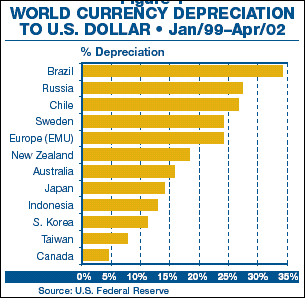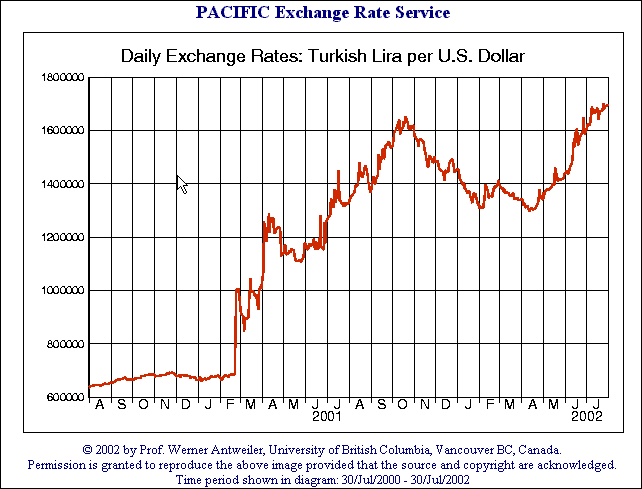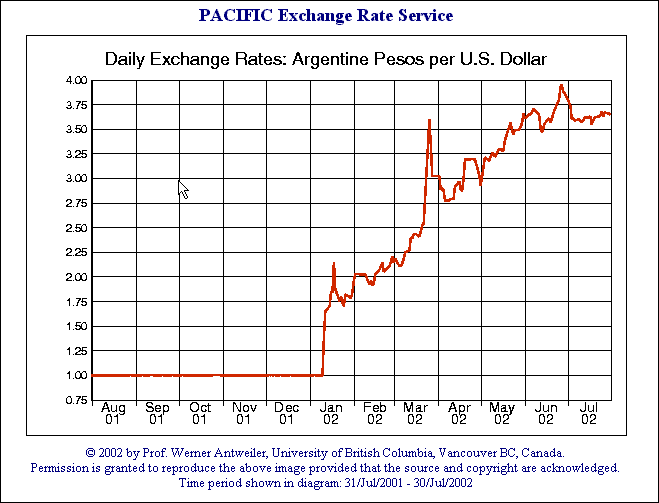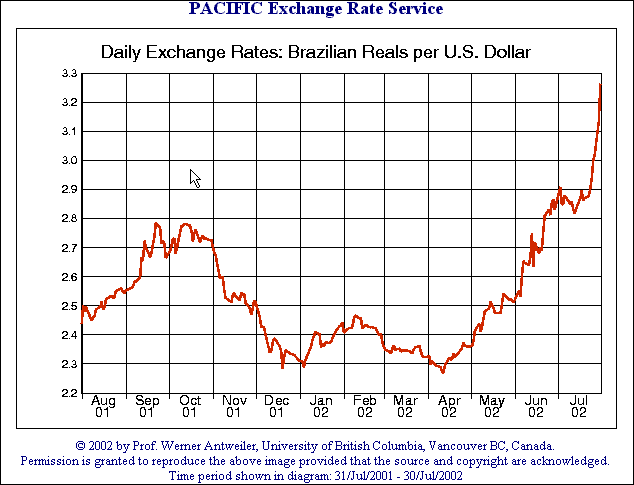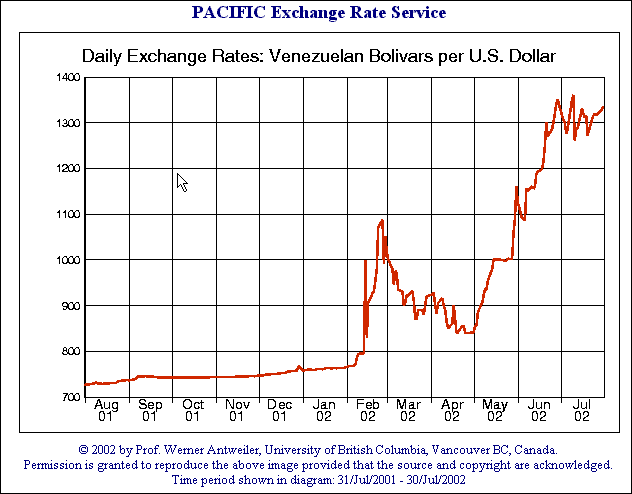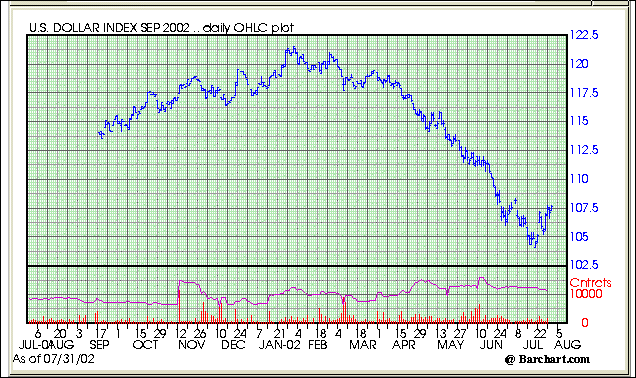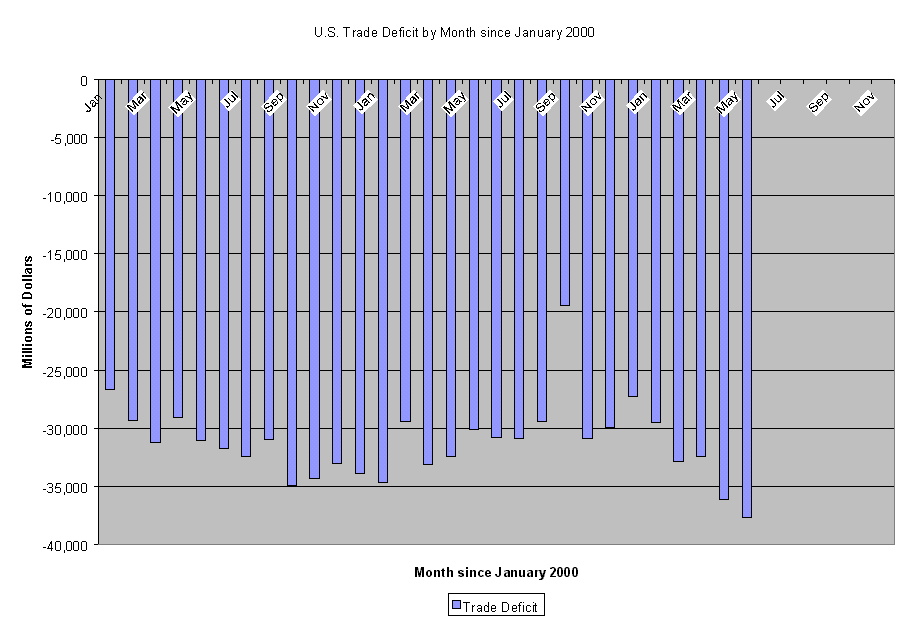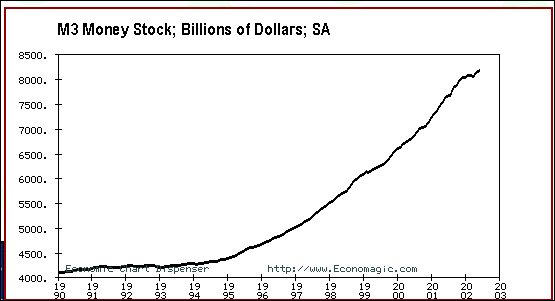...But not all of the People ... |
|
Is money only paper? |
|
| Every currency has found itself devalued by the rulers
and/or political class of each country as they try to maintain their
control over the masses. Ultimately, history teaches us that the
currency tends to become almost worthless and every fiat currency,
like the current US Federal Reserve note, is reduced to its marginal
value of production. During the past two years, the fiat currencies of many countries, Turkey, Argentina, Brazil, Uruguay, and despite the strong dollar policy of the US, the American dollar itself have seen their value deteriorate. The following chart is illustrative of the deterioration of many foreign currencies versus the US Federal Reserve note during the last few years.
Note that the chart does not include the devastation wrought by the slide of the currencies of Turkey and Argentina and many African nations. The Turkish lira was the first currency to topple in this latest wave of devaluations of fiat currencies beginning in February 2001.
In January 2002, the Argentina peso was delinked from the US dollar and has since lost by over 67% of its value against the dollar and considerably more against other currencies as shown in the following chart.
The economic upheaval in Argentina has spilled over into the rest of the South American continent. Brazil has recently caught the flu as shown by the following chart.
Venezuela also is suffering from the flu.
Not be left out, Uruguay last night closed all of its banking institutions. Both Uruguay and Argentina have stated overnight that there are no reserves of gold in their treasuries. It should be noted that each and every one of these countries have been helped (?) by the IMF. With help from the IMF, why do they need enemies? The cures suggested by the IMF have not worked and have only worsened the situation. The international banks have had their loans repaid by the American taxpayer who is largely the source of the IMF funds. |
|
The American strong dollar policy is gone! |
|
Since 1995, the Clinton administration pursued a strong dollar policy in order to keep the economy bubbling up. As a result, the dollar increased for many years against many other currencies resulting in large increases in our trade deficit. NAFTA was also instrumental in moving manufacturing jobs from the US to lower-wage countries. However, the US trade weighted dollar index peaked in January 2002 and has been falling since as shown in the following chart.
Following the G-8 meeting in Canada, the central banks including the Bank of Japan and the European Central bank have intervened on a massive basis to stop the fall of the dollar. The Bank of Japan alone is thought to have expended over $30 billion US dollars in the effort. We keep hearing economists suggesting that a falling dollar is good for America. Outside of the aircraft industry, a few technology-oriented firms such as Boeing and Lockheed Martin, and agribusiness, all a falling dollar does is increase the cost of our imports. According to one recent study, 67% of all manufactured goods consumed in the US are imported. It will take time and money to rebuild our manufacturing base. With banks being extremely tight with credit and companies with high debt loads, we wonder if that manufacturing base can be rebuilt. Now go back and visualize the further havoc the currencies of Turkey, Argentina, Brazil, etc., have suffered as a result of a 15% drop in the value of the US dollar since January. Is it any wonder that these countries are in turmoil. |
|
The IMF and the World Bank |
|
| The role of the IMF and the World Bank was developed in
1945 at the Bretton Woods meeting. Since then, the two allied
organizations have expanded those roles significantly. The IMF deals mostly
with countries whose trade deficits require capital infusions to payoff
debt while the World Bank is mostly involved with large capital
expenditure infrastructure funding projects. The following quote from the Global Exchange summarizes the current position of the IMF and the World Bank today.
The IMF has been instrumental in destroying the currency of Turkey, Argentina, Brazil and other countries with their "structural adjustment programs." After the record of the past 47 years, it is past time for the IMF to be abolished. |
|
Rigging Markets only makes the cliff higher! |
|
|
If there is any doubt in my reader's minds that the stock and gold markets are rigged, perhaps, if I tell you the technique that is being used it will erase the doubt. A large number of S&P 500 futures index contracts are either bought or sold depending upon which way the market is to be moved. Shortly thereafter, within minutes and often seconds, the floor specialists begin to cover. Jim Puplava of Financial Sense Online lays out the technique.
Still think it doesn't happen?Goldman Sachs used exactly that technique in moving up the semiconductor stocks last week. Again from Financial Sense Online -
|
|
The Trade Deficit is the Achilles Heel of the U.S. |
|
Despite a slowing economy, the trade deficit ballooned to an all-time record level in June 2002. With the foreign investors continuing to cash in their money and go home, the soaring trade deficit further reinforces the rush to a lower dollar and an increase in the printing press.
|
|
Growth in M3 fueled the bubble and now pours gasoline on the dollar to destroy its value! |
|
As the earlier chart of the US dollar index showed, the dollar is falling. Its value in the market place is seriously being eroded. Check the M3 hockey stick above. Reminds me of many sales curves for technological companies. And you know how many of them are still around. Will the dollar face the same end-game? Who knows. But the result of this M3 expansion is simply that imports will be more expensive and the foreign investor fearing the value of his holding will continue to sell US dollars and/or stocks. Greenspan's Fed policy of keeping interest rates low because increasing them will cause great pain to the economy and the interest rate swaps that have increased earnings for many public companies. M3 growth to compensate for lost foreign investment can only lead to higher costs in the US for consumers.
|
|
Where to now? |
|
|
The stock market manipulation of mid July by the Plunge Protection Team brought a little breathing room to the banks like J. P. Morgan, Citibank, Bank of America, etc., that have large derivative positions. If they did not take the opportunity to reduce those positions, I have no sympathy for their stockholders or managements. The rally did reduce the pressure of redemptions on many mutual funds as prices rose. The 401(k), IRA statements and the mutual fund reports for the second quarter caused many investors to think seriously about cashing in. And many did as the amount of money that was drained from equity funds clearly shows. The only problem was where should they put the money. Many people I spoke to have suggested that real estate is o.k. However, in my mind, real estate is the last big bubble waiting to burst. If unemployment continues to increase in the second half of 2002, real estate could be in trouble. New home sales are benefiting from 0% down mortgages. But vacancies in apartments, shopping malls, offices and commercial buildings are all increasing. Rents are falling in most areas. Sales of previously owned homes are also down and the average length of time to sell previously owned homes is increasing in many parts of the country.
|
|
Fiat currency is in trouble! |
|
|
As stated in the beginning, fiat currency eventually falls to the marginal cost of production. In the case of paper money, you only need to look at the German experience of the early 1920's to understand the potential disaster that can befall any fiat currency. Of course, a major portion of the world's population is unaware of that disaster. But ask the people of Turkey, the Argentina, Brazil and now Uruguay, if their fiat currency has any "real" value. I believe that you will get a different answer now than you would have just a few months ago. And for me, that is why, despite the trashing of gold and gold stocks by the bullion banks of the Gold Cartel, I just smile and say, "Thank you!" For when the Gold Cartel will blow up is unknown to me or to anyone. It is not a question of "If."
|
|
But then - 'Tis Only My Opinion! |
|
| Fred Richards August 2002 Corruptisima republica plurimae leges. [The more corrupt a republic, the more laws.] -- Tacitus, Annals III 27
This issue of 'Tis Only My Opinion was
copyrighted by Adrich Corporation in 2002.
Last updated - July 6, 2008
|
|
